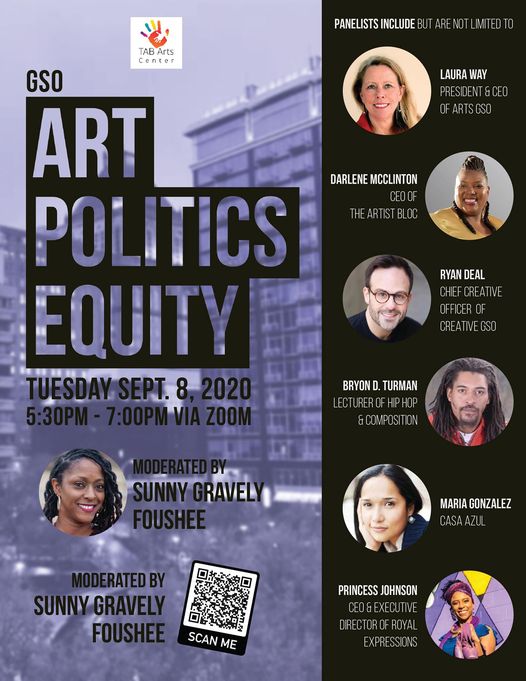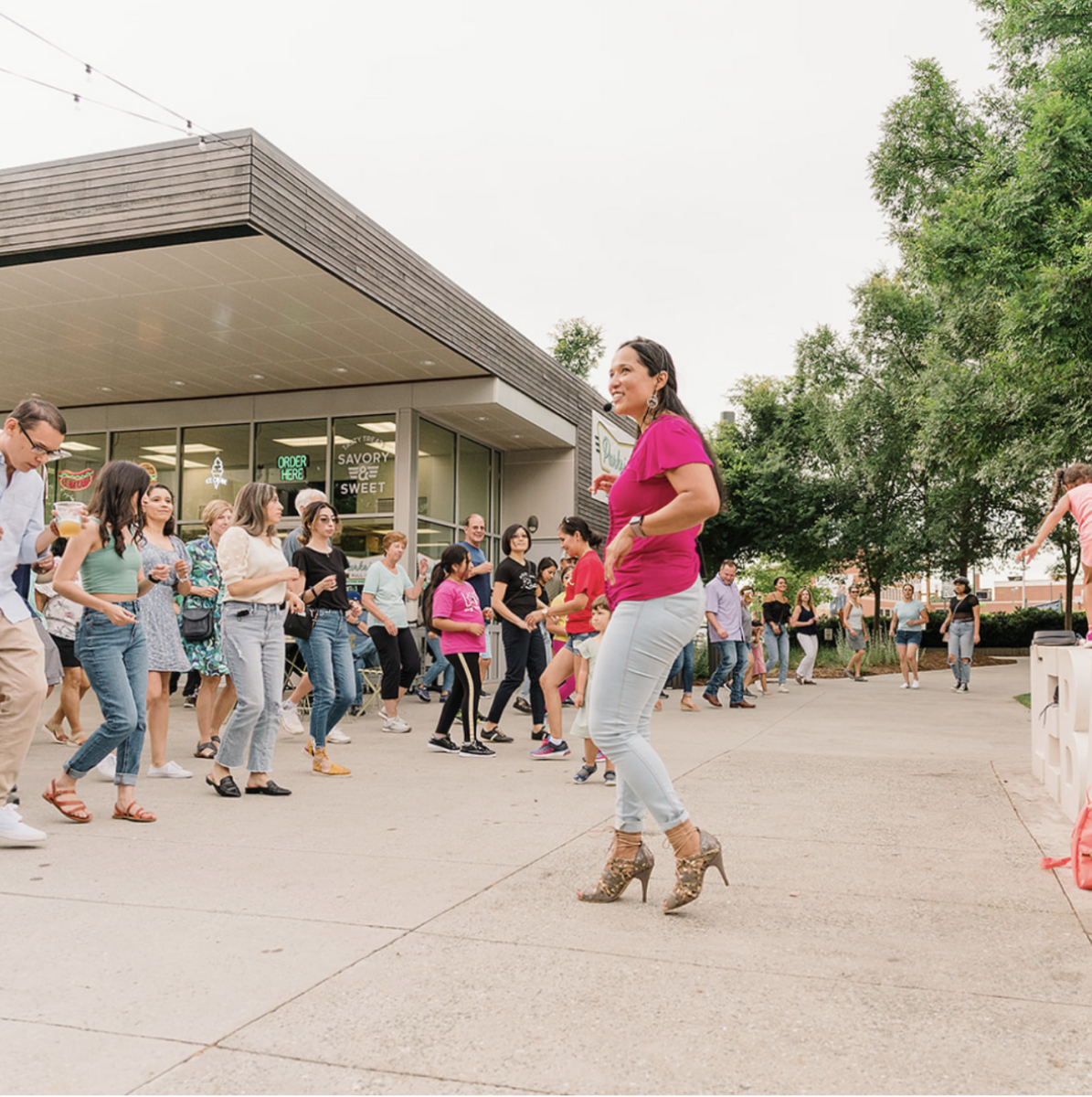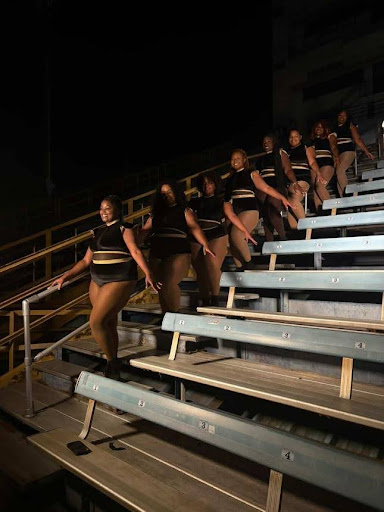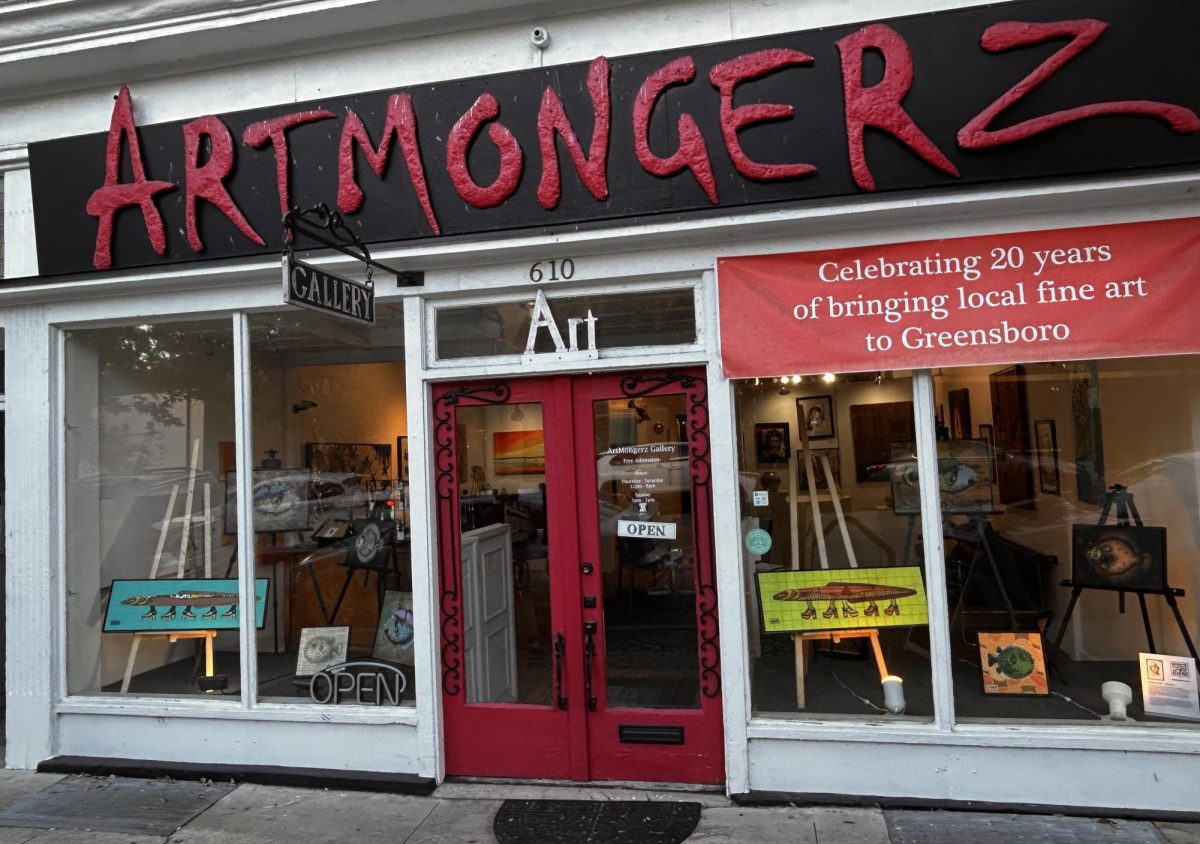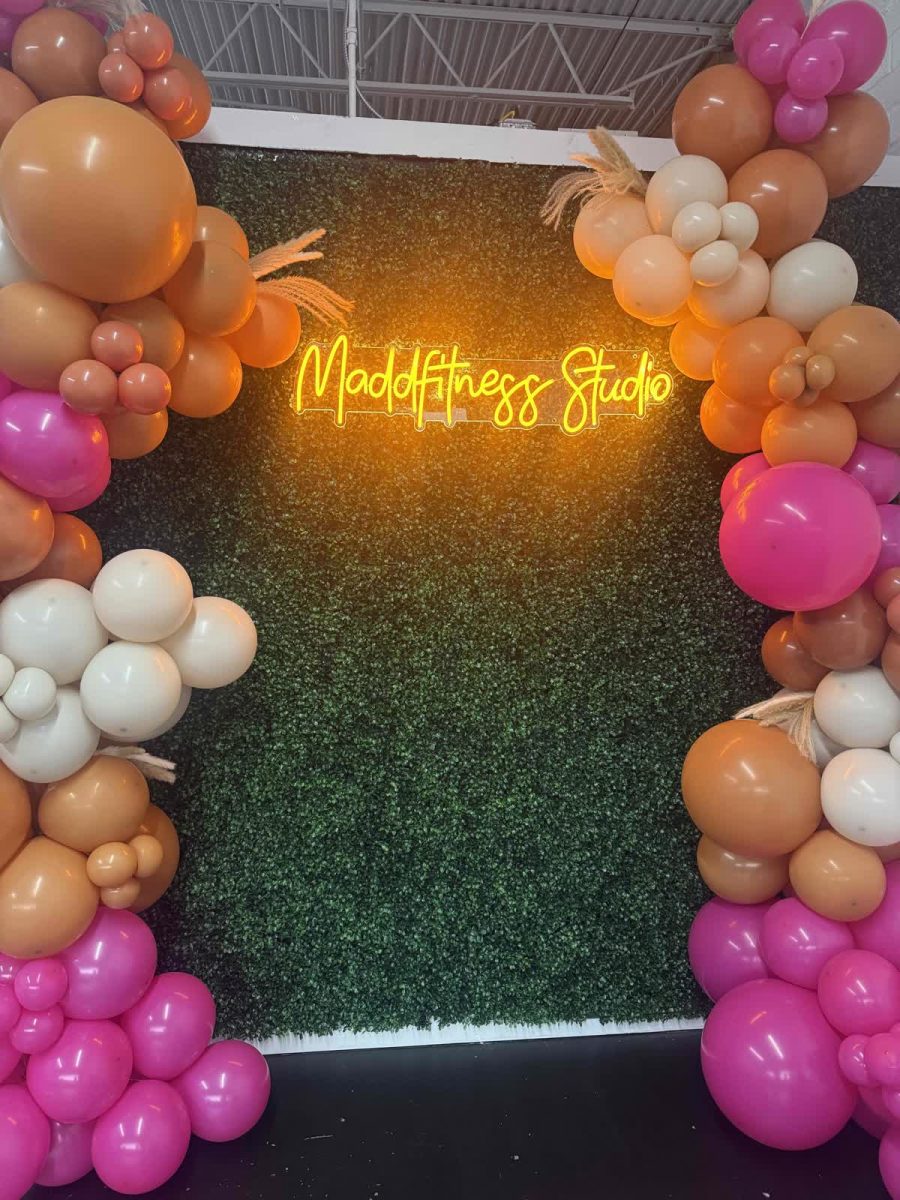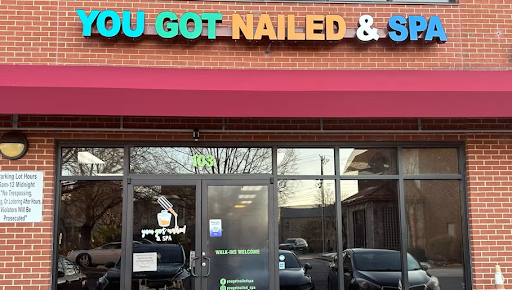TAB Arts Center hosted a panel discussion on the arts scene in Greensboro, the politics that surround it and the equity that’s deserved among the creative community on Sept. 8 from 5:30-7 p.m.
The panel hosted six distinguished creative leaders from community arts organizations, such as The Artist Bloc, Arts GSO and contemporary ballet company Royal Expressions.
The panelists included Laura Way of Arts Greensboro (Arts GSO), Ryan Deal of Creative Greensboro (GSO), Darlene McClinton of The Artist Bloc, Princess Johnson of Royal Expressions, Maria Gonzalez of Casa Azul and Bryon Turman, Hip Hop Lecturer at NC. A&T.
The event was moderated by Sunny Gravely Foushee, co-founder of TAB Arts Center and co-owner The Artist Bloc. Foushee is a nationally recognized fine artist who has exhibited her artwork all over the country.
In 2016, Foushee along with co-founders Darlene J. McClinton and Watricia Shuler decided to create the TAB Arts Center Nonprofit to bring quality art education and art therapy to the community.
The Artist Bloc opened their doors two years earlier in August 2014, with the goal to become a “home” to local artists in Greensboro and to be a place that encourages their talents.
The TAB Arts Nonprofit and The Artist Bloc are partnered together to engage all socio-economic groups through culture and the arts and to advocate for diversity and inclusion in Greensboro’s art community.
The art center’s virtual panel addressed topics on systematic racism within funding and grants for art organizations led by people of color, the challenges of receiving funding, support, and exposure and what can be done in the creative community to be more inclusive of all people of different ethnic groups.
When asked do they believe systematic racism exists within the arts, every panelist agreed it indeed does.
Way, President and CEO of Arts Greensboro says that Arts Greensboro led a task force to look into their funding reports recently, and a lot of things came to light about how their funding is distributed.
“There’s inequity in our funding models, that I believe is rooted in systemic racism,” Way said.
She says she personally came to a realization when she noticed there were only white arts leaders sitting around the table deciding on a major grant project.
The arts leaders were asked who would they invite to apply for the grant amount of $5,000, but Way noticed there was not much representation for the community who severely needed funding at the time.
“What I realized was, there were no black faces sitting around that table. There was no one from East Greensboro [sitting] around that table, Way said. “It just never occurred to them to sit back and ask, “Who is not being represented at this table?”
“There is an exclusion,” Gonzalez, CEO of ClubFitness Greensboro and board chair of Latino arts and culture organization Caza Azul said.
She feels there is not enough representation of the black and brown community because they aren’t being asked to discuss their concerns.
There are several organizations in Greensboro that serve ethnic communities, yet they aren’t being considered for grants and funding projects.
“There are many organizations that are not invited to the table. We are lacking in properly representing our [diverse] community.”
Deal, who is the Creative Greensboro’s Chief Creative Economy Officer, said when working at the Arts and Science Council in Charlotte, NC years prior, he realized that over 85 percent of their grants were going to majority-white arts organizations. For one of their grants, there were at least 20 white organizations with only one organization having a primary focus on engaging communities of color.
“This does not happen by accident, by mistake, or overnight,” Deal said. “This only happens through decades and decades of funding privileged systems and structures, preventing the opportunity for the next generation of [diverse] arts and culture organizations to build infrastructure.”
Deal agrees that there needs to be a change in how grants and funding are distributed to art and culture organizations. There is not a fair advantage to organizations that serve people of color, because there is not a fair representation of our community.
“Where systemic racism does not exist, is in the rewarding of the creative intellect to our people,” Deal said. “We are all creative beings, and what we have to do as people is not think we have the authority to decide which [art] is better and which is not, and provide opportunities and access for us all to see our full creative potential.”
Some panelists revealed how they have struggled to receive a fair chance in funding and community support, as compared to their more established counterparts. McClinton, co-owner of The Artist Bloc and Grants Manager for Arts Greensboro shared that she had difficulty in receiving support for The Artist Bloc when they first opened in 2014.
“It was very challenging to get white people to come in and patronize the business. I really had to jump through a lot of hoops to make them feel safe.” McClinton said.
“They would walk in, see black people working there and they would just turn around and walk out. I had to build relationships with the [UNCG] professors just to let them know it was okay to buy from us.”
She says it was the simple fact that being located near UNCG, where they could just walk around the corner and grab art supplies, white patrons would rather pass them and drive to Hobby Lobby and Micheals instead of just coming there.
“We were able to overcome that, but that was a challenge for us,” McClinton said.
Johnson, the founder of Royal Expression contemporary ballet, says she had to be very strategic when applying for grants.
“I have honestly learned that you are probably wasting your time applying for a grant as a person and organization of color,” Johnson said. “Because very little funding in the arts community goes to art organizations of color.”
She says she has struggled with receiving funding on a local level and had to appeal on a state and national level.
“The largest grant we’ve ever received from Arts Greensboro is $3,000 and we have been operating for 11 years,” Johnson said. “The overall accumulated amount from local grants we’ve received is around $8,000, whereas a white organization in our city can get that at one time.”
The majority of the panelists lead organizations that serve people of color. The Artist Bloc is popular among students of color that attend N.C. A&T and UNCG. Caza Azul primarily serves the Latino community, and Royal Expressions is mainly supported by the African American community.
Thurman, who is a hip-hop professor at N.C. A&T says he thinks the arts, especially black and brown art have always been underappreciated by society.
“I think the arts have always been underfunded. I don’t think there has been a time in our society where arts were properly funded.” Thurman said. “Black and brown art is oftentimes not seen as important as other forms of art until it makes money. But then, that money doesn’t travel back the other way in the development of young [diverse] artists.”
The panel truthfully brought to light the challenges the arts and culture community has faced due to the systemic racism of ethnic organizations, and how art leaders are failing in properly representing the diverse creative community of Greensboro.
It’s agreed that conversations about art politics and equity need to be had, but even though these voices need to be heard, there need to be people listening. During this virtual panel discussion, there were only a few attendees that were listening in.
“We definitely want to get the conversations going, and to talk about difficult things so that we can learn from each other and come up with solutions to change this,” Foushee said.
Those in attendance appreciated the opportunity to hear everyone’s perspectives and agreed that there are major changes that need to be made in our art communities to ensure a bright future in Greensboro for emerging creative artists.
“If we want our community’s younger generation to continue on with art and culture, we’re gonna have to invest in them,” Gonzalez said. “There is a lot to do, but having these conversations and applying action is going to be very important in implementing change.”

